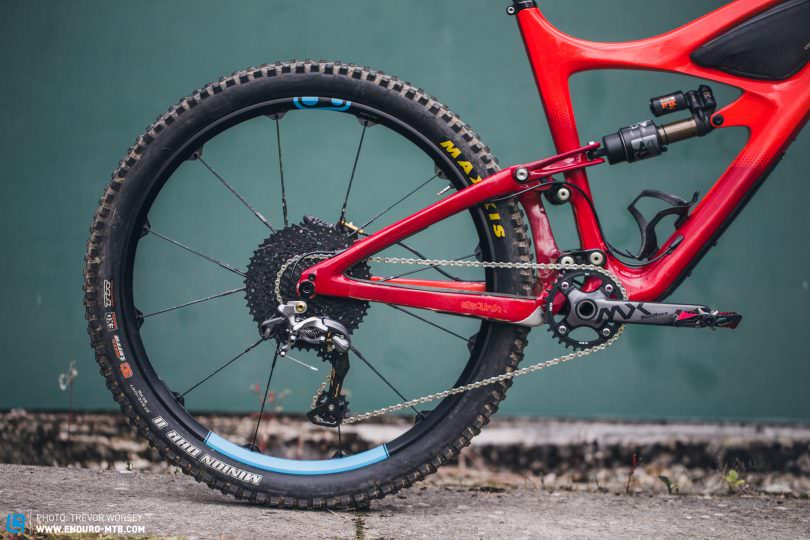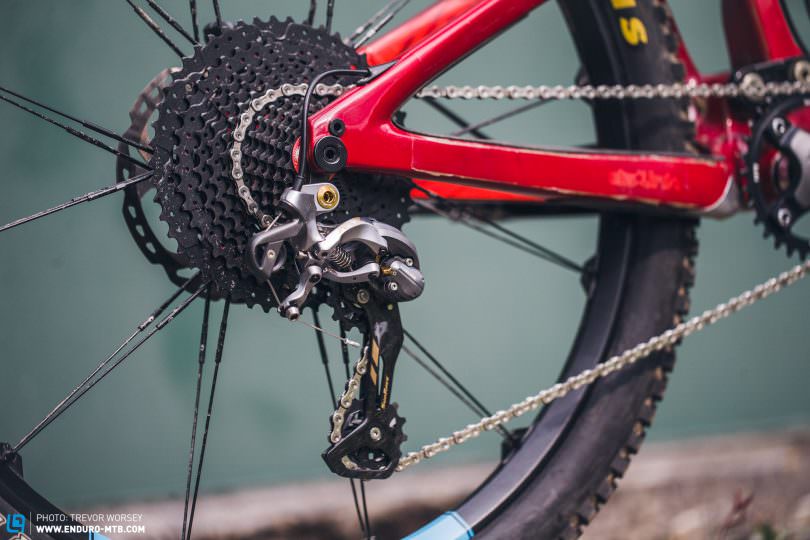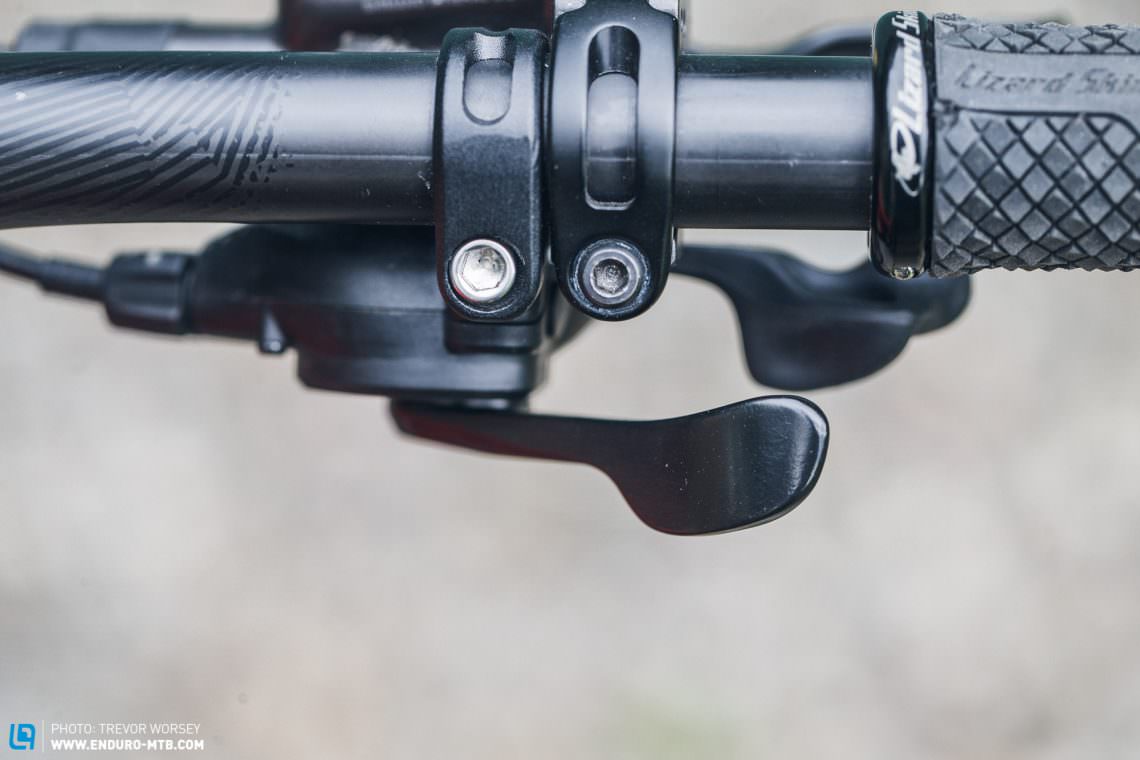Most companies would announce their release of a new product with launch parties, drum banging and high profile back slapping: strange then that SunRace would drop their potentially groundbreaking SunRace MZ 12-speed drivetrain onto the market with barely a whisper. We’ve had the chance to test it and were quite surprised.
Few companies have dared to challenge the drivetrain giants of Shimano and SRAM; with huge R&D budgets and decades of experience perfecting their products behind them, what brand could compete? Well, SunRace could: they’ve been quietly supplying OE components to an impressive amount of brands for years and with their aftermarket cassettes well regarded by riders, they’ve subtly become a legitimate contender.

SunRace have now developed a 12-speed drivetrain that can be fitted to your standard Shimano compatible hub, giving 11-speed riders another route to a 12-speed drivetrain. The question is, is it as good as its competition? We’ve been riding it for a month to find out.
SunRace MZ 12-speed in detail
SunRace have declared their intent to take on the establishment with their boutique 12-speed MZ rear mech. The stripped down design has familiar features like the SRAM style cable routing and Shimano-esque clutch; features a titanium spring, carbon fibre outer cage and weighs an impressive 7 g less than SRAM’s XX1 mech, no mean feat.

Its featherweight comes with a downside as there is a degree of flex in the design around the clutch pivot and cage. The clutch only locks down the cage, not the rest of the derailleur body like other designs, which should make for lighter shifts but at the possible expense of chain retention. The SunRace MZ mech uses light but cheap, 12t top and 14t bottom jockey wheels which run on metal bushings, rather than bearings. This means additional friction in the system compared to higher quality jockey wheels, and this drag is noticeable straight out of the box leaving us with doubts over their long-term durability.


The trick looking SunRace MZ 11-50 12-speed cassette has a red anodised alloy spider riveted to the black anodised chainrings. SunRace uses a 7075 alloy for the larger 42 and 50t chainrings, then moves to steel for the smaller teeth. SunRace have also released an SRAM XD compatible 10-50t cassette with 500% range but undoubtedly the 11-50t version’s trump card is that it’s designed to work with a standard, Shimano type freehub.

Many of SunRace’s potential customers will be coming from the popular Shimano XT 11-46 cassette, which provides a range of 418%. Upgrading to the 11-50 cassette gives the rider a range of 454%, less than the 500% of the XD option 10-50t cassette but it can be done without the cost of changing your hub/wheel to one with an SRAM XD driver. We fitted SunRace’s MZ drivetrain on a test bike previously fitted with an 11-speed 11-46t set-up, we swapped the 30t front chainring to a 32t to give us a higher gear, whilst still having, basically, the same crawler gear as a 30-46t. We never span out with a 32-11 over the test period and felt that a lower crawler gear would be too low to be practical out on the trail.
SunRace offer two 12-speed chain options, the (€ 40) affordable MZ CN12S and the (€ 100) lightweight, MZ CN12H which has hollow pins and a fancy gold titanium nitride coating. Both feature SunRace’s reusable quick link which makes using either chain very user-friendly. The MZ shifter is a basic looking unit with no bells or whistles to show that you’ve spent € 70. I-Spec and SRAM compatible matchmakers are available for a cleaner cockpit but the standard, non-hinged, clamp means that you have to strip out your controls to fit or remove the shifter.

The MX chainset is billed as part of the MZ groupset despite being part of a different range. They are boost adjusted with a 53 mm chain line and use a narrow-wide aluminium chainring. The forged aluminium cranks are bonded to a 24 mm Chromoly, ISIS, axle and the price includes a compatible bottom bracket. Having not seen an ISIS axle on an MTB crankset for a while, we had to remember that the technology served us fine for many years but with modern cranks featuring larger diameter axles and more splines to increase stiffness and power transfer we suspected that they may be the weak link in the drivetrain.
Weights in comparisons
| SunRace MZ | XX1 Eagle | NX Eagle | |
|---|---|---|---|
| Shifter | 117 g | 124 g | 109 g |
| Derailleur | 258 g | 265 g | 341 g |
| Cassette | 529 g | 360 g | 610 g |
| Chain | 271 g1 | 260 g | 270 g |
| Total without Crankset | 1,175 g | 1,009 g | 1,310 g |
| Crankset | 804 g | 493 g | 705 g |
| Total | 1,979 g | 1,502 g | 1,945 g |
Prices in comparisons
| SunRace MZ | XX1 Eagle | NX Eagle | |
|---|---|---|---|
| Shifter | € 70 | € 170 | € 38 |
| Derailleur | € 220 | € 304 | € 119 |
| Cassette | € 140 | € 458 | € 110 |
| Chain | € 402 | € 92 | € 29 |
| Drivetrain without crankset | € 470 | € 1,024 | € 296 |
| Crankset | € 130 | € 463 | € 135 |
| Total | € 600 | € 1,487 | € 410 |
Setting up the SunRace MZ
Details on the MZ drivetrain are sparse and SunRace haven’t released any set-up information, so setting up the drivetrain wasn’t as straightforward as we’ve come to expect: The first fail was the cranks, as we could not get them to fit properly with the BBM97 bottom bracket that the cranks come with. No matter how many spacers or combinations we tried, we always had lateral movement caused by a gap between the cranks and BB seal. Unfortunately, because of this, they couldn’t be reviewed and we had to run the review on another set of cranks.


After the initial fitting of the rest of the drivetrain, with the stops and cable tension correctly adjusted, we were still experiencing chain noise on the 50 t cog. Chain length, hanger and chain line were all checked and correct but we had set up the chain (ala SRAM Eagle) with one full link plus the connector, which proved too short. We confirmed with SunRace that the chain length should be two full links of overlap plus the quick link and this fix, combined with winding in the B-tension bolt to increase the distance between the 50t and the chain, stopped the chatter. A small annoyance was that in order to thread the gear cable through the SRAM-like rollamajig, you need a new or soldered cable else it frays as you push it through, meaning a new cable if you need to take the mech off.
The other downside of the design of the MZ mech is that it makes getting your wheel back on difficult as the movement path of the mech doesn’t allow much room to wiggle the cassette under the chain: this was a bit of an inconvenience in the workshop but would be frustrating on the trail or during a race!
Riding the SunRace MZ
On the trail, the SunRace MZ 12-speed drivetrain performs consistently. We’ve always been a fan of Shimano’s trigger finger downshift and it’s good to see SunRace going with a natural feeling, ergonomic design. The trigger only allows one downshift at a time but its light and fast in action and the chain slips down the cassette effortlessly. The surface of the thumb actuated upshift lever is as smooth as a baby’s bottom which may result in a slip in wet weather or mud. It allows up to four shifts at a time which is useful for when you need to dump a bunch of gears in response to a drastic change in gradient – if your thumb is long enough.

Shifting across the sprockets is super light and quick in either direction and the derailleur easily copes with the closer ratios – the shifts between the 50t and 42t cogs in particularly are noticeably quicker than the XT cassette due to the decreased jump in teeth. Under pressure, the drivetrain coped reassuringly well with rapid changes in gears and the black cassette has worn well with only minimal, cosmetic wear over the test period.

The design of the mech is similar to Shimano clutch units but the spring action is lighter. Without the tension of SRAM and Shimano mechs, the shift action feels light and requires minimum effort to change gears. We had no chain management issues over the relatively short test period despite a few uplift sessions, but due to the lighter spring tension and longer chain, we experienced more chain slack when in the smallest cogs which increases the likelihood of a lost chain. Aggressive riders or racers will want to opt for a chain device to keep things where they should be when the riding gets rowdy.
Conclusion
We were disappointed that the cranks/BB wouldn’t fit but the fact is that the MX cranks would probably not appeal to riders willing to spend €220 on their rear mech and SunRace would do well to develop a chainset that does the MZ components justice. Riders not wanting to change hubs or cranks will just upgrade the shifter, mech, chain and cassette. As the only two 12-speed options for non-XD freehubs, it’s fair to compare the SunRace MZ drivetrain to SRAM NX Eagle; SunRace tallies up more expensive than NX Eagle but the weights of the derailleur, shifter and MZ CN12H chain come in lighter and is still a whole bunch cheaper than SRAM’s flagship XX1 drivetrain. Only time will tell if it can cope with the demands a mech of this calibre will be subjected too.
SunRace MZ is not perfect but it’s very good, especially for what is essentially a first generation product. SunRace MZ 12-speed is sexier than NX and cheaper than XX1, so it may well hit the sweet spot for riders looking to go from 11- to 12-speed as simply as possible.
More information at sunrace.com
Did you enjoy this article? If so, we would be stoked if you decide to support us with a monthly contribution. By becoming a supporter of ENDURO, you will help secure a sustainable future for high-quality mountain bike journalism. Click here to learn more.
Words: Thomas Corfield Photos: Trev Worsey








